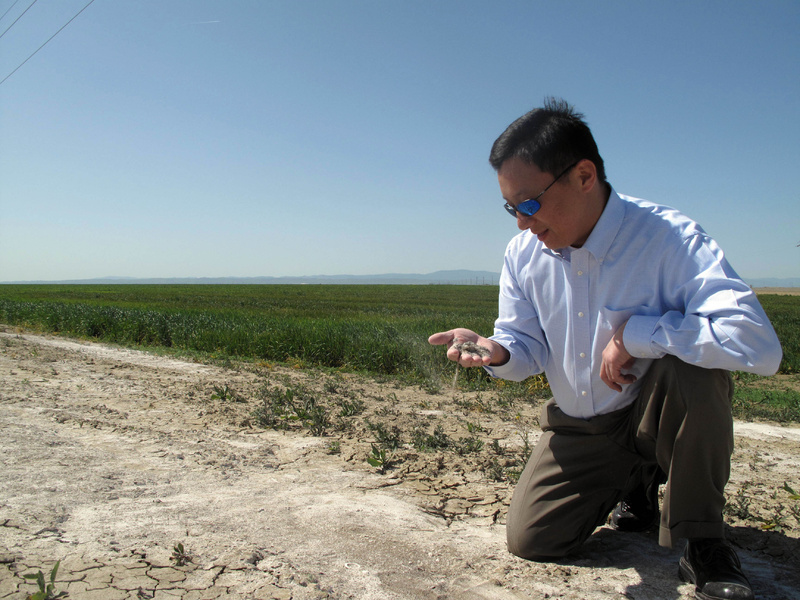LEMOORE, Calif. — Cash-strapped farmers in California’s agricultural heartland and environmentalists at odds over water rights and wildlife protections agree on something: Thousands of acres of salty farmland is the perfect site for a sprawling utility-scale solar farm.
The 47 square miles of land proposed for the Westlands Solar Park in remote Kings and Fresno counties is just one of dozens of unfinished solar projects in California, but renewable energy analysts say it is a rare one that enjoys the broad support of environmental groups such as the Sierra Club, powerful agriculture interests and state government.
Thousands of solar panels would be on and near the salty-white, fallowed farmland, most of which is owned by the Westlands Water District.
The first chunk of solar proposed for the site — the total size of which is roughly that of San Francisco — could generate up to 1 gigawatt of power, or enough to energize up to one million homes.
The embrace of solar power as a new cash crop comes at a time when the district is struggling with mounting debt.
In 2000, Westlands floated a bond to buy 100,000 acres of farmland where poor drainage had created a salt buildup that makes the land unusable for growers. But with the salty land came water rights, so Westlands bought it in order to divert the water to more productive farms.
Since then, drought and environmental issues have cut revenue to Westlands by reducing the amount of water it can sell to members, who range from corporate to family farming operations. Over the past two years, Westlands has tripled farmers’ assessments to repay bonds.
Westlands now sees solar power as a way to put the land back to work.
With Mojave Desert solar projects shrinking in number because of recent proposed legislation that would create two new national monuments there, Woolf said the valley has become “the prime location for solar.”
Environmentalists like the site for solar panels because it had been intensively farmed for decades, so it does not contain habitat for endangered species.
Also, keeping in mind the state’s goal of getting one-third of its power from renewable sources by 2020, the California Energy Commission has identified zones where large-scale projects can be developed. The land that would be used by Westlands is in these identified areas, which means some regulatory hurdles already have been met.
The solar park has to meet the requirements associated with building the power lines and substations that will be needed to deliver the power.
Still, renewable energy experts say the project is promising, partly because landowner Westlands is a public agency operating under state authority, so many of the regulatory issues bogging down other large-scale solar projects do not apply.
Send questions/comments to the editors.



Success. Please wait for the page to reload. If the page does not reload within 5 seconds, please refresh the page.
Enter your email and password to access comments.
Hi, to comment on stories you must . This profile is in addition to your subscription and website login.
Already have a commenting profile? .
Invalid username/password.
Please check your email to confirm and complete your registration.
Only subscribers are eligible to post comments. Please subscribe or login first for digital access. Here’s why.
Use the form below to reset your password. When you've submitted your account email, we will send an email with a reset code.